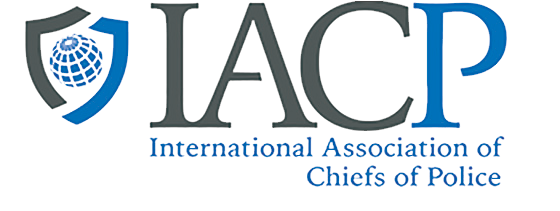Cybercrime Community Resources
What other cyber crime communities, working groups, or resources should law enforcement consider joining?
Stop.Think.Connect.
The Stop.Think.Connect. Campaign is a national public awareness campaign aimed at increasing the understanding of cyber threats and empowering the American public to be safer and more secure online. The Campaign’s main objective is to help all Americans become more aware of growing cyber threats and arm them with the tools to protect themselves, their families, and the community. For more information see Stop.Think.Connect.
Additional DHS Resources:
Homeland Security- Cyber Security
Secret Service Electronic Crimes Task Force
Immigration and Customs Enforcement Cyber Crimes Center
US-CERT
DHS Fusion Centers
Primary fusion centers serve as the focal points within the state and local environment for the receipt, analysis, gathering, and sharing of threat-related information and have additional responsibilities related to the coordination of critical operational capabilities across the statewide fusion process with other recognized fusion centers. Furthermore, primary centers are the highest priority for the allocation of available federal resources, including the deployment of personnel and connectivity with federal data systems. For more information see DHS Fusion Centers.
FBI Field Offices
The FBI has 56 field offices (also called divisions) centrally located in major metropolitan areas across the U.S. and Puerto Rico. They are the places where we carry out investigations, assess local and regional crime threats, and work closely with partners on cases and operations. Each field office is overseen by a special agent in charge, except our offices in Los Angeles, New York City, and Washington, D.C., which are headed by an assistant director in charge due to their large size. For more information see FBI Field Offices.
High Technology Crime Investigation Association (HTCIA)
HTCIA is a non-profit organization focused on providing education and collaboration for the purpose of preventing and investigating high tech crimes. Members enjoy access to training, certification, an active listserv and forensic research. For more information see High Technology Crime Investigation Association (HTCIA).
InfraGard
InfraGard is a partnership between the FBI and the private sector. It is an association of persons who represent businesses, academic institutions, state and local law enforcement agencies, and other participants dedicated to sharing information and intelligence to prevent hostile acts against the U.S. For more information see InfraGard.
International Association of Computer Investigative Specialists (IACIS)
IACIS is a non-profit membership-based organization whose mission is to provide forensic computer training, accredited certification (CFCE), as well as to facilitate a network of computer forensic professionals. For more information see International Association of Computer Investigative Specialists (IACIS).
International Association of Crime Analysts (IACA)
The International Association of Crime Analysts was formed in 1990 to help crime analysts around the world improve their skills and make valuable contacts, to help law enforcement agencies make the best use of crime analysis, and to advocate for standards of performance and technique within the profession itself. We accomplish these goals through training, networking, and publications. For more information see International Association of Crime Analysts (IACA).
Internet Crimes Against Children Task Force (ICAC)
The ICAC Task Force was created to help Federal, State and local law enforcement agencies enhance their investigative responses to offenders who use the Internet, online communication systems, or computer technology to sexually exploit children. For more information see Internet Crimes Against Children Task Force (ICAC).
Multi-State Information Sharing & Analysis Center (MS-ISAC)
The MS-ISAC is the focal point for cyber threat prevention, protection, response and recovery for the nation’s state, local, tribal, and territorial (SLTT) governments. The MS-ISAC 24×7 cyber security operations center provides real-time network monitoring, early cyber threat warnings and advisories, vulnerability identification and mitigation and incident response. For more information see Multi-State Information Sharing & Analysis Center (MS-ISAC).
NW3C
NW3C provides a nationwide support system for law enforcement and regulatory agencies involved in the prevention, investigation and prosecution of economic and high-tech crime. Training options include instruction in all areas of economic and cyber crime investigation and prosecution.
IACP
Crimes targeting individuals, corporations, and institutions through the use of computer technology is a growing threat to personal and national security. The IACP and its partners have a number of programs that address aspects of cyber crime, which include human trafficking, cyber bullying, fraud, theft, extortion, transnational crime and terrorism.
SEARCH
Cybercrime investigators at all levels can benefit from tools and resources that provide targeted information, strategies and tips. The stakes are high—online fraud, Internet bullying, child exploitation, identity theft, and more—with nearly every crime today leaving a digital footprint. Collected here is a range of SEARCH resources developed for cybercrime investigators.
Regional Computer Forensics Laboratories (RCFLs)
An RCFL is a one-stop, full service forensics laboratory and training center devoted entirely to the examination of digital evidence in support of criminal investigations such as: Terrorism, Child Pornography, Crimes of Violence, Trade secret theft, Theft or destruction to intellectual property, Financial crime, Property crime, Internet crimes, fraud. For more information see Regional Computer Forensics Laboratories (RCFLs).
Cybercrime Prevention Training
Law enforcement agencies frequently provide outreach and training to expand public awareness and crime prevention to citizens throughout their communities. In an effort to support and advance police/community interaction addressing cyber crime and victimization, the National White Collar Crime Center (NW3C), International Association of Chiefs of Police (IACP), the Office of Community Oriented Policing Services (the COPS Office), the Bureau of Justice Assistance (BJA), and the U.S. Department of Justice, have developed a series of training modules to identify the most common types of Internet and computer-related scams, and instructional tools to help people avoid being victimized by these scams.
These training modules are designed to be delivered by law enforcement practitioners to members of the public through community outreach, training sessions and other venues. The mission of this program is to provide free resources to educate members of the public about Internet and computer-related scams, to provide them with tools, information, and resources to protect themselves, and to take action if they are victimized. The modules include:
Current Adobe Reader and Microsoft PowerPoint programs are required to run these presentations. These presentations will need to be opened in “Read Only” format.
 Identity Theft The goal of most cyber crimes is to obtain or gain access to someone’s personal information such as social security number, bank account, and credit card numbers. This type of information can be used to perpetrate identity theft, one of the most costly and personally devastating forms of cyber crime. Trying to resolve the repercussions of this crime can often take years. This presentation introduces some of the more common identity theft schemes, how they are facilitated, and tips to avoid and report victimization.
Identity Theft The goal of most cyber crimes is to obtain or gain access to someone’s personal information such as social security number, bank account, and credit card numbers. This type of information can be used to perpetrate identity theft, one of the most costly and personally devastating forms of cyber crime. Trying to resolve the repercussions of this crime can often take years. This presentation introduces some of the more common identity theft schemes, how they are facilitated, and tips to avoid and report victimization.
 Work-at-Home-Scams A flexible schedule and the ability to work from home lures many Americans into work-at-home scams. This presentation introduces common types of work-at-home scams, discusses how the different scams work, and provides tips to avoid and report victimization.
Work-at-Home-Scams A flexible schedule and the ability to work from home lures many Americans into work-at-home scams. This presentation introduces common types of work-at-home scams, discusses how the different scams work, and provides tips to avoid and report victimization.
 Romance Scams Online dating can be a very successful way to find the perfect match, but use caution as these sites are also used to facilitate a number of financial frauds. Keep yourself and your loved ones safe by learning common tactics used by scammers, indicators of fraud, and tips to avoid and report victimization.
Romance Scams Online dating can be a very successful way to find the perfect match, but use caution as these sites are also used to facilitate a number of financial frauds. Keep yourself and your loved ones safe by learning common tactics used by scammers, indicators of fraud, and tips to avoid and report victimization.
 Health-Related Fraud Consumers face a great risk of receiving counterfeit, mislabeled, or adulterated pharmaceuticals when purchasing medication online. This presentation identifies dangers associated with fraudulent online pharmacies as well as other types of health-related fraud including numerous health insurance and medical discount card scams. Tips to avoid and report victimization are also covered.
Health-Related Fraud Consumers face a great risk of receiving counterfeit, mislabeled, or adulterated pharmaceuticals when purchasing medication online. This presentation identifies dangers associated with fraudulent online pharmacies as well as other types of health-related fraud including numerous health insurance and medical discount card scams. Tips to avoid and report victimization are also covered.
 Auction Fraud Looking for the best deal on products often leads consumers to online auction sites. These sites are also a valuable tool for criminals to commit a number of financial frauds. This presentation covers some of the more common types of auction fraud, discusses how these crimes are facilitated, and provides tips to avoid and report victimization.
Auction Fraud Looking for the best deal on products often leads consumers to online auction sites. These sites are also a valuable tool for criminals to commit a number of financial frauds. This presentation covers some of the more common types of auction fraud, discusses how these crimes are facilitated, and provides tips to avoid and report victimization.
 Advance Fee Fraud is one of the most common frauds. It can range from a down payment on non-existent merchandise to taxes and fees on fictitious lottery winnings. This presentation explains how typical schemes work and provides tips to avoid and report victimization.
Advance Fee Fraud is one of the most common frauds. It can range from a down payment on non-existent merchandise to taxes and fees on fictitious lottery winnings. This presentation explains how typical schemes work and provides tips to avoid and report victimization.
 Credit and Debit Card Fraud Learn how a typical credit card fraud is perpetrated by looking at a common scenario. This presentation also identifies how a victim’s credit card information is often obtained, provides some tips to prevent victimization, and how to report a lost or stolen card.
Credit and Debit Card Fraud Learn how a typical credit card fraud is perpetrated by looking at a common scenario. This presentation also identifies how a victim’s credit card information is often obtained, provides some tips to prevent victimization, and how to report a lost or stolen card.
 Real Estate Scams can range from losing a few dollars to losing your home. This presentation identifies some of the more commonly encountered types of real estate scams, how to recognize the indicators associated with this type of fraud, and provides some tips to avoid and report victimization.
Real Estate Scams can range from losing a few dollars to losing your home. This presentation identifies some of the more commonly encountered types of real estate scams, how to recognize the indicators associated with this type of fraud, and provides some tips to avoid and report victimization.
 Computer Crimes threats including ransomware, phishing, and social engineering are on the rise with the increased use of social media and mobile communication. This presentation identifies the common types of cyber crime, explains how to recognize potential threats, and provides tips to avoid and report victimization.
Computer Crimes threats including ransomware, phishing, and social engineering are on the rise with the increased use of social media and mobile communication. This presentation identifies the common types of cyber crime, explains how to recognize potential threats, and provides tips to avoid and report victimization.
 Cyberstalking is committed when an individual repeatedly uses the internet, computers, or other electronic devices to engage in threatening or harassing behavior. This presentation defines the act of cyberstalking, tips to avoid cyberstalking, and what to do if you are being cyberstalked.
Cyberstalking is committed when an individual repeatedly uses the internet, computers, or other electronic devices to engage in threatening or harassing behavior. This presentation defines the act of cyberstalking, tips to avoid cyberstalking, and what to do if you are being cyberstalked.
The Opioid Epidemic is on the rise and we should all be informed about the factors within this current epidemic. During this presentation I will cover what opioids are, what they used for, the common types of opioids, the indicators of opioid addiction, and national hotlines created for helping individuals who are effected by opioids.
The Internet of Things is a computing concept that describes the idea of everyday physical objects being connected to the internet and being able to identify themselves to other devices. This presentation focuses on IoT and its relation to smart homes and security.
Wearable Technology usage now involves social media, communication, and connection to various personal devices. There are best practices we should all be aware of when using our wearable technology. This presentation covers the basics of wearable technology, how it is used, associated risks, and prevention techniques.
Smartphone Security is becoming increasingly more important with smartphone ownership being at an all-time high. As we rely more on our smartphones, they can collect large amounts of personal data on many aspects of our lives. This presentation covers security features on your device and why it is important to utilize these features. This presentation will also provide tips on how to recover a lost or stolen device.
Instructors
Instructors should use these training modules, which are presented in PowerPoint format, as a foundation in community outreach training sessions. Instructors can leverage these modules with their own expertise and experience to expand on the material included.
Cybercrime Prevention Brochures
In addition to these training modules, a Cybercrime Prevention brochure is also available for download and is meant to be used as a take-away resource for attendees. The brochure outline tips on how to prevent becoming a cybercrime victim, and are available in six languages—English, Arabic, Chinese, Korean, Spanish, and Vietnamese.
Cybercrime Prevention Brochure:









